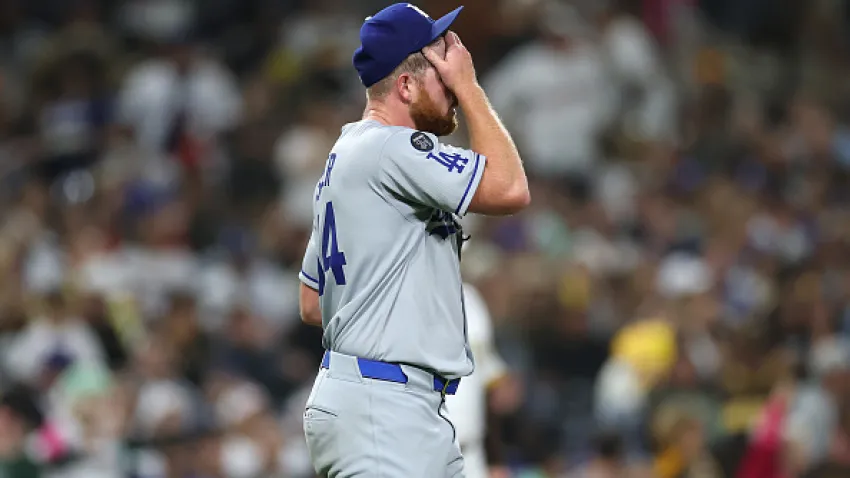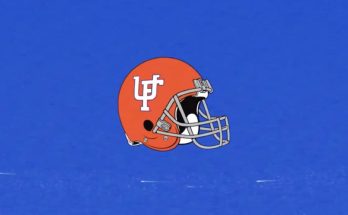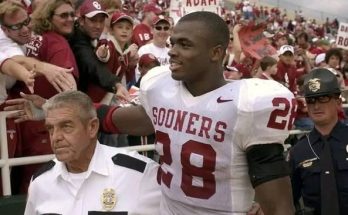The Los Angeles Dodgers have built a reputation on pitching depth, elite player development, and strategic roster maneuvering, but even the most well-oiled machines can break down under sustained stress. On Tuesday night, that breakdown was on full display in a humbling 11-1 loss to the Texas Rangers, a game that underscored the current state of desperation in the Dodgers’ pitching staff. The moment that crystallized this downward spiral didn’t come when the scoreboard tipped into blowout territory—it came when Matt Sauer, a 25-year-old right-hander with only a handful of innings at the major league level, was asked to wear the remainder of a game that had long since slipped away. In short, the Dodgers punted, and Sauer took one for the team.
In baseball parlance, a “punt” is not a formal stat or designation—it’s a tacit understanding that the outcome of a game has become less important than conserving resources for the future. It’s a concession, not of the season or the series, but of that singular, increasingly unwinnable battle. On nights like this one, when injuries, fatigue, and a brutal schedule collide, the decision to stop chasing a game that’s gotten out of hand is both strategic and sobering. For the Dodgers, a team still near the top of the National League standings with World Series aspirations, such moments aren’t common. But this one was telling.
Sauer entered Tuesday’s game in the fifth inning with the Dodgers trailing 6-1. It could have still been a game—stranger comebacks have happened—but the subtext was clear. Starter Walker Buehler had been knocked out after just 3.2 innings, allowing seven hits, six earned runs, and two home runs. His velocity dipped noticeably, prompting concern from fans and analysts alike. After the game, Dodgers manager Dave Roberts confirmed what many feared: Buehler was experiencing tightness in his surgically repaired right elbow, and the team would be cautious going forward.
That caution might be the only reasonable course given the team’s mounting injuries. Buehler had only recently returned from his second Tommy John surgery, and expectations for his workload were already tempered. His setback adds to a growing list of Dodgers pitchers sidelined by injury—Clayton Kershaw remains out, still progressing slowly from shoulder surgery. Dustin May’s timeline is similarly murky. Emmet Sheehan hasn’t thrown a pitch this year due to forearm issues, and breakout lefty Ryan Yarbrough was just placed on the injured list last week with a back injury.
With those names shelved and the bullpen already overtaxed from previous short starts and extra-inning games, the Dodgers had little choice but to send Sauer out to eat innings, no matter the cost. And eat innings he did. Over 3.2 laborious frames, he surrendered five more runs on seven hits, including a towering home run by Rangers slugger Adolis García that punctuated the night’s misery. Sauer’s ERA ballooned. His confidence may have taken a hit. But he gave the team exactly what it needed: someone to endure the beating and prevent further strain on an already fragile bullpen.
There is something both thankless and heroic about the mop-up role in a blowout. It’s a position of necessity, rarely glamour. Sauer didn’t take the mound looking to dominate—he took it knowing he had to survive. This wasn’t a showcase outing or a career-making performance. It was damage control, the baseball equivalent of running into a burning building to salvage whatever remains. Roberts acknowledged as much in his postgame remarks, praising Sauer’s willingness to take the ball and absorb the punishment. “Matt showed a lot of guts out there,” he said. “It’s not easy in that spot, but he gave us what we needed.”
The image of Sauer trudging back to the dugout after another crooked number flashed on the scoreboard encapsulated the Dodgers’ dilemma. For years, they’ve had the luxury of rotating elite arms and cycling in top prospects with ease. The organizational pitching depth has been the envy of the league. But depth has its limits, and 2025 is testing them. Gavin Stone and Bobby Miller have been pushed into prominent roles earlier than perhaps ideal. Landon Knack, while impressive in stretches, is still a work in progress. The team recently signed veteran free agent Hyun Jin Ryu to a minor league deal in hopes of patching holes.
Yet the truth remains that no team, no matter how rich in prospects or cash, can fully account for this many injuries to the same unit. The Dodgers are trying to hold it together with duct tape and adrenaline, relying on bullpen games and hoping for quality starts from young arms who are still learning on the job. The danger, of course, is twofold: not only do they risk burning out their relievers, but they also risk damaging the development of pitchers like Sauer, who may be thrown into situations they’re not ready for.
The organization knows this. That’s why nights like Tuesday hurt—not just on the scoreboard, but symbolically. They reflect the narrowing margin for error. When you’re a championship contender, punting games should be rare. Each one chips away at the veneer of invincibility. The Dodgers are still a very good team, bolstered by a lineup featuring Mookie Betts, Shohei Ohtani, and Freddie Freeman. But even a juggernaut needs arms to pitch, and right now, the Dodgers are struggling to find healthy ones.
It also raises a broader question about the sustainability of their model. The Dodgers have long blended scouting acumen with player development and financial might to build one of the most consistent contenders in baseball. But with the universal pitch clock, fewer off-days, and increasing velocity demands on pitchers, staying healthy has never been harder. The very best teams, including the Dodgers, are being forced to adapt or suffer. The front office, led by Andrew Friedman, has rarely shied away from bold moves. If the current staff can’t hold up, expect trades, promotions, and perhaps more unconventional decisions as summer approaches.
For now, though, it’s Matt Sauer and a weary bullpen bearing the burden. Sauer’s long, ugly outing won’t make highlight reels or endear him to box-score watchers. But within the clubhouse, it may have earned him something more valuable: respect. Doing the dirty work, especially when the game is lost, takes a specific kind of mental toughness. Sauer’s night may have been brutal statistically, but it was vital contextually. That matters to teammates who understand the grind and the unglamorous side of chasing a title.
The Dodgers remain in contention, and no one is writing them off because of one night. But the cracks are showing. The injuries are mounting. And the need for reinforcements is growing more urgent by the day. As June rolls on and the trade deadline looms, the front office will be forced to answer uncomfortable questions. Can the current staff last the season? Can Buehler realistically contribute in a meaningful way? How much risk are they willing to take with young arms, and what are they willing to sacrifice to shore up the rotation?
Tuesday’s blowout loss to the Rangers won’t define the Dodgers’ season, but it might come to symbolize a key turning point. It was the night when the pitching crisis could no longer be massaged or minimized. It was the night when the team’s vast resources looked suddenly finite. It was the night Matt Sauer took one for the team—not to chase a win, but to protect what’s left of a battered staff.
In baseball, every team has games it must simply endure. This was one of those nights for Los Angeles. If they eventually reach the World Series and hoist the trophy, Sauer’s sacrifice may be a forgotten footnote. But for now, it stands as a raw and honest snapshot of where this club finds itself—straining to compete, forced to punt, and relying on the unlikeliest of arms to carry the load when no one else can.



